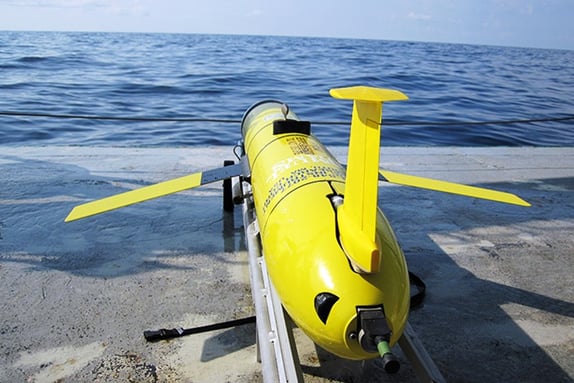Marine Gliders, Roamers of the Seas
Brief description of what marine gliders are and how they work
EDUCATIONMARINE R&DANIMAL PROTECTION
Marine gliders are autonomous underwater vehicles (AUVs) that are designed to collect oceanographic data over long periods of time. They are essentially small, unmanned submarines that move through the water by changing their buoyancy, and they are becoming increasingly important tools for scientists studying the world's oceans. In this article, we'll take a closer look at marine gliders and explore how they work, what they can be used for, and why they are so valuable to oceanographers.
How Marine Gliders Work
Marine gliders are propelled through the water by changing their buoyancy. They are typically shaped like a torpedo and are about 6 feet (2 meters) long. They have a pair of wings that allow them to glide through the water, and they use a battery-powered motor to adjust their buoyancy and move up and down in the water column.
To move forward, a marine glider changes its buoyancy by pumping oil or water into a bladder inside its hull. This changes the glider's density, causing it to either sink or rise in the water column. When the glider sinks, it tilts its wings downward and uses the angle of attack to generate lift, allowing it to glide forward through the water. To rise to the surface, the glider pumps oil or water out of the bladder, making it less dense and causing it to float upward. The glider then tilts its wings upward to maintain its upward trajectory.
Marine gliders are equipped with a range of sensors and instruments that allow them to collect data about the ocean environment. These may include sensors that measure temperature, salinity, pressure, dissolved oxygen, and other parameters. The gliders also have a GPS receiver that allows scientists to track their movements and monitor their progress.
Applications of Marine Gliders
Marine gliders are used for a wide range of oceanographic research applications, including studying ocean currents, mapping ocean properties, and monitoring marine life. Because they are autonomous, they can operate for weeks or even months at a time, collecting data that would be difficult or impossible to gather using traditional ship-based methods.
One of the most important applications of marine gliders is in studying ocean currents. These currents play a critical role in transporting heat, nutrients, and other substances around the world's oceans, and understanding how they work is essential for predicting weather patterns, sea level rise, and other climate-related phenomena. Marine gliders can be used to measure ocean currents at different depths and over extended periods of time, allowing scientists to build up a detailed picture of how they change over time.
Marine gliders are also useful for mapping ocean properties such as temperature and salinity. These properties can vary greatly depending on the location, depth, and time of year, and understanding these variations is important for predicting the behavior of marine ecosystems and the impact of climate change. Marine gliders can collect data at multiple depths and over long periods of time, providing a more comprehensive view of ocean properties than ship-based measurements alone.
Finally, marine gliders are increasingly being used to monitor marine life, including fish, whales, and other large marine animals. Gliders equipped with acoustic sensors can detect the presence and movements of these animals, providing valuable information about their behavior and distribution. This information can be used to inform conservation efforts and help protect vulnerable marine species.
Conclusion
Marine gliders are becoming increasingly important tools for oceanographers, providing a new way to collect data about the world's oceans. These autonomous underwater vehicles can operate for weeks or even months at a time, collecting data on ocean currents, properties, and marine life. By gliding through the water, changing their buoyancy, and using a range of sensors and instruments, marine gliderscan provide a more detailed and comprehensive view of the ocean environment than traditional ship-based measurements alone. As a result, they are becoming an increasingly popular tool for scientists studying the world's oceans.
Despite their many advantages, marine gliders are not without their limitations. They are relatively slow-moving, and can take days or even weeks to cover long distances. They are also sensitive to ocean currents, which can make it difficult to control their movements and keep them on course. Additionally, because they are autonomous, they can be expensive to build and maintain.
Despite these limitations, marine gliders are proving to be valuable tools for oceanographic research. Their ability to collect data over long periods of time and at multiple depths is providing new insights into the behavior of the world's oceans, and helping scientists to better understand the impact of climate change and other environmental factors.
In the coming years, it is likely that marine gliders will become even more sophisticated and capable, as advances in technology allow for greater autonomy, more advanced sensors, and longer operating times. As these technologies continue to evolve, marine gliders will play an increasingly important role in our understanding of the world's oceans, and in our efforts to protect these fragile ecosystems for future generations.



